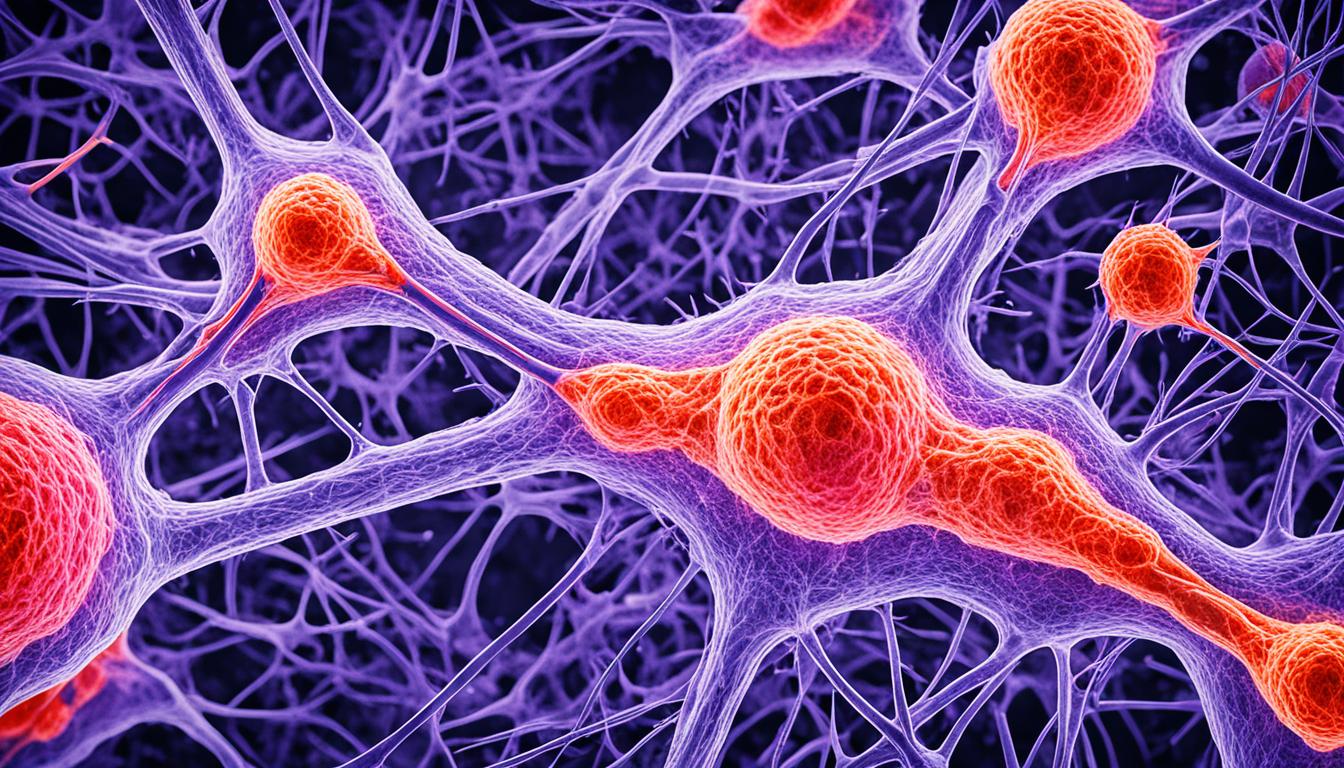Endometrial cancer is known as uterine cancer and is the top gynecological cancer in the U.S. In 2020, over 65,620 new cases are expected. Unfortunately, it will lead to around 12,590 deaths. It starts in the uterus’s inner lining cells.
It’s crucial to notice the signs of endometrial cancer early for better treatment. Watch for post-menopausal bleeding, pelvic pain, weight loss, and feeling very tired. If you notice these, see a doctor right away.
The process of diagnosing this cancer includes a detailed medical history check, a physical exam, a transvaginal ultrasound, and an endometrial biopsy. These tests determine the cancer stage. The stage is vital for planning the best treatment.
For treatment, there are many options. These can include surgery, radiation, chemo, targeted therapy, and more. This plan depends on the patient’s specific needs and the cancer stage.
Stem cell therapy is a new treatment choice showing hope for endometrial cancer. Stem cells can regenerate and aim to kill the cancer’s root cells. In clinical trials, this approach has shown a lot of promise.
Key Takeaways:
- Endometrial cancer is the most common type of gynecological cancer in the United States.
- Symptoms of endometrial cancer may include post-menopausal bleeding, pelvic pain, weight loss, and fatigue.
- Early detection and diagnosis are crucial for effective treatment.
- Treatment options for endometrial cancer include surgery, radiation therapy, chemotherapy, targeted therapy, hormone therapy, or a combination of these approaches.
- Stem cell therapy shows promise in targeting and eliminating cancer stem cells in endometrial cancer.
Diagnosis and Staging of Endometrial Cancer
Finding out someone has endometrial cancer means doing lots of tests. These tests help doctors see how much the disease has spread. Knowing this is key to choosing the best treatment for each person.
Doctors check your medical history and do a full physical exam first. They want to know your symptoms, past health issues, and if you’re at risk for endometrial cancer. The exam looks for any unusual findings in your pelvic area.
Next, you might get a transvaginal ultrasound. This is a painless test that uses sound waves to make pictures of your uterus. It spots any growths and shows how thick the lining of your uterus is. These details are important in diagnosing the disease.
Another common test is the endometrial biopsy. It takes a small bit of tissue from the uterus lining to look at under a microscope. This can confirm if you have cancer and which type it is.
After the diagnosis comes staging. Staging shows how far the cancer has spread, helping doctors plan the best treatment. The staging is done using the FIGO system, which starts from 0 and goes to IV.
To understand better, let’s look at what each stage means:
| Stage | Description |
|---|---|
| Stage 0 | Cancer cells are only in the inner lining of the uterus (endometrium). |
| Stage I | Cancer cells have grown into the endometrium but not farther. |
| Stage II | The cancer has reached the cervix from the endometrium. |
| Stage III | Cancer has moved beyond the uterus, affecting nearby parts like ovaries or lymph nodes. |
| Stage IV | Cancer has spread to distant organs like the bladder or lungs. |
The stage of the cancer tells doctors important information. It guides the treatment plan and helps predict the patient’s outcome. Based on the stage, treatment can be tailored to each person’s situation.
Innovative Stem Cell Therapy for Endometrial Cancer
Cancer stem cells (CSCs) play a big role in endometrial cancer growth. They can make more of themselves and change into other cell types in the tumor. A new treatment method aims to target these cells.
This new method uses the power of stem cells to deal with CSCs in endometrial cancer. The idea is to send stem cells to the tumor. Once there, they work to stop the growth and survival of CSCs.
Scientists are hard at work to create treatments that go straight to the heart of the issue. They want to stop CSCs from helping the tumor grow and spread. These efforts bring hope for better, more tailored treatments for those with endometrial cancer. They open up new chances for treatment.
FAQ
Q: What is endometrial cancer?
A: Endometrial cancer is the top type of gynecological cancer in the U.S. It begins in the uterus’s lining cells. Symptoms include post-menopausal bleeding, pelvic pain, and feeling tired.
Q: How is endometrial cancer diagnosed?
A: The first step in diagnosing this cancer is looking at your medical history and doing a physical exam. Doctors often use a transvaginal ultrasound and an endometrial biopsy to confirm diagnosis.
Q: What are the stages of endometrial cancer?
A: Endometrial cancer has five stages, from 0 to IV, showing how far the cancer has spread. Stage 0 means the cancer is only in the uterus. Stage IV means it has reached other organs.
Q: What are the treatment options for endometrial cancer?
A: Treating endometrial cancer might involve surgery, radiation, chemo, targeted therapy, or hormone therapy. The treatment depends on many factors, like the cancer’s stage and your health.
Q: What is stem cell therapy for endometrial cancer?
A: Stem cell therapy aims to use stem cells to fight against cancer. Cancer stem cells in endometrial cancer development are the main target. It’s a new and promising way to treat this type of cancer.

